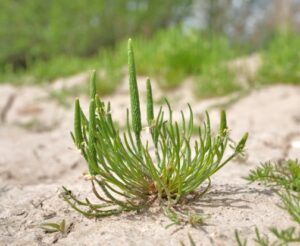2021 County Report for East Kent
Geoffrey Kitchener and Sue Buckingham
This report covers Kent as a whole, vcc 15 and 16; fuller reports (Kent Botany) are provided each year on the Kent webpage. After a covid-induced break for 2020 and early 2021, the Kent Botanical Recording Group (KBRG) resumed field meetings, holding five from mid-July onwards. These were reported in a newsletter in October; find lists were provided to all KBRG members.
2021 saw a total of 27,709 Kent records added to the BSBI database, nearly all being for that year.
We sought to encourage a focus on rare plant register (RPR) species, for which we received over 1,300 records. Three of these, Kent Biodiversity Species, were surveyed and reported specially: Orchis purpurea (Lady Orchid or Fair Maid of Kent), Polygala amarella (Dwarf or Kentish milkwort) and Carex vulpina (True Fox-sedge). The year’s Lady Orchid survey covered 5,780 plants in 32 locations. Drafting of RPR online species accounts reached the end of Part S with 16 more accounts added; all earlier parts were updated to cover 2020 records.
The online version of Francis Rose’s manuscript county Flora was reissued, with 148 further pages transcribed.
Our population of Lythrum hyssopifolia (Grass-poly), discovered in 2020 in a brownfield habitat at Betteshanger, was reassessed at 3,000 plants in 2021 but planning permission was granted for residential development which will destroy the site, despite representations made. On the other hand, the brownfield habitat of Swanscombe peninsula was afforded SSSI protection by Natural England (for which we made supporting representations), although an application for a Development Consent Order for a theme park, bypassing the standard planning process, remains current.



